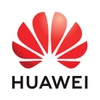 Credit: 88375648 Dreamstime
Credit: 88375648 Dreamstime
It has been a renaissance for the PC market in recent years, with sales picking up over 2020 and 2021, and IDC now predicts that worldwide shipping of PCs will grow by 3.2 per cent CAGR through to 2025.
While the pandemic inflated demand by driving many to buy new devices for home offices and entertainment purposes through lockdowns and social distancing, and there will be a normalcy returned to the market, for resellers in the PC space, there will remain significant opportunities in the years ahead. “A market slowdown is inevitable. However, even when it does occur, the total available market for personal computing devices will be significantly greater than it would have been if not for the months spent working, learning, gaming, and connecting on these devices during the pandemic,” the IDC report states.
Where will the bulk of the opportunity be? With higher-end devices, with consumers and professionals being willing to spend a little more for devices that can do more. Fortuitously, this is the best opportunity for the channel, as the higher-end devices offer more solution sale opportunities, and typically open the door for upselling opportunities around peripherals, software, and support services.
Huawei is keen to collaborate with the channel on these opportunities, with a channel-friendly approach to its product portfolio now being applied to its relatively new PC business.
Huawei’s attitude towards innovation within the PC space has meant that in five years it went from no meaningful business in the space to being the second-largest manufacturers of devices in its homeland in China. It is seeing rapid growth in other markets too, now that it is expanding globally.
Around half of Huawei’s workforce are employed in R&D, meaning the company has vast resources supporting the differentiation of its product suite. The company has also taken a unique direction towards PCs and laptops in that it has leveraged its experience in mobile devices to inform its PC hardware, rather than the other way around. Consequently, Huawei has implemented “FullView Display” onto its laptops, delivering an edge-to-edge screen, and a screen-to-body ratio of 91 per cent.
Further enhancing these devices as workplace tools is the unusual 3:2 screen ratio that has been employed by the company. As the company notes, word documents on 16:9 or 16:10 screens often minimise the top toolbar to conserve space. A 3:2 screen ratio, meanwhile, is more suited to workplace scenarios, as it allows both for better full-screen display of office documents and Web pages, and the display of two A4 documents side-by-side in split-screen mode.
Easier for the channel to support
Another key feature of the Huawei MateBook series is how cloud and AI-ready it is, and how much of a benefit this can be to channel partners charged with managing a fleet for their customers. Huawei AI Life allows for remote management of devices, from when they turn on, through to the settings, patching and so on. This was designed for the consumer that wanted to manage their entire digital environment seamlessly across their devices, but it can easily be applied to remote managed services. With remote working likely to be a long-term trend well beyond the COVID-19 restrictions, CIOs and other IT managers are looking for solutions to manage a decentralised IT environment, and the Seamless of Huawei’s cloud-based computing experiences will significantly help managed services providers in building these solutions.
Furthermore, Huawei engineers have addressed another significant bugbear facing fleet management in decentralised IT environments: failure rates. Research suggests that nearly one in three notebooks fail over three years, which can make management, repairs and replacement difficult when staff are highly geographically spread. One of the chief causes for these kinds of failure rates is components being dislodged or damaged in day-to-day use. Particularly with notebooks where professionals might move around with them. By applying smartphone design to the structure of the components within the device, Huawei can deliver far more reliable devices, particularly when they’re being moved around.
Finally, Windows 11 is a major opportunity to the channel, in terms of managing upgrades and support for the new operating system. The full Huawei MateBook line is upgradable to Windows 11, meaning that this is another strategic conversation that partners can have with their customers.
Huawei might be a new entrant to a highly mature PC marketplace, but the professional features and design of its devices will be, the company hopes, appealing to the channel in facilitating strategic discussions with their customers, and then delivering on relevant solutions that meet the needs of the modern workplace.
For more information on Huawei's MateBook line click HERE.




